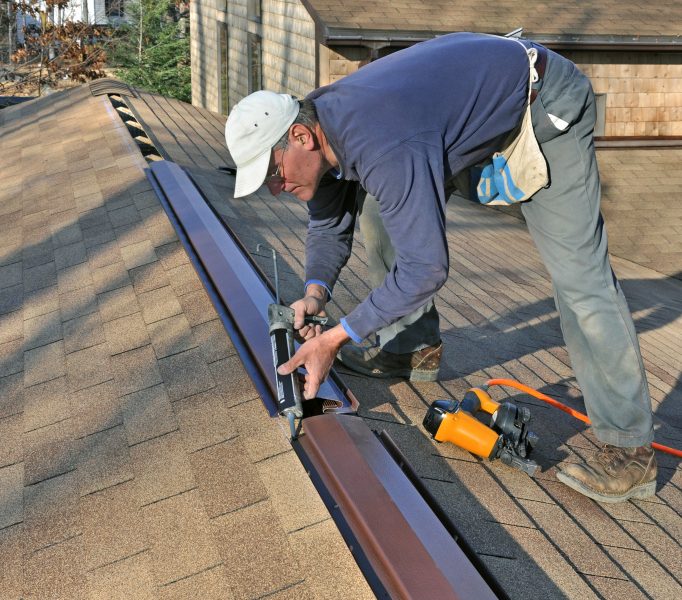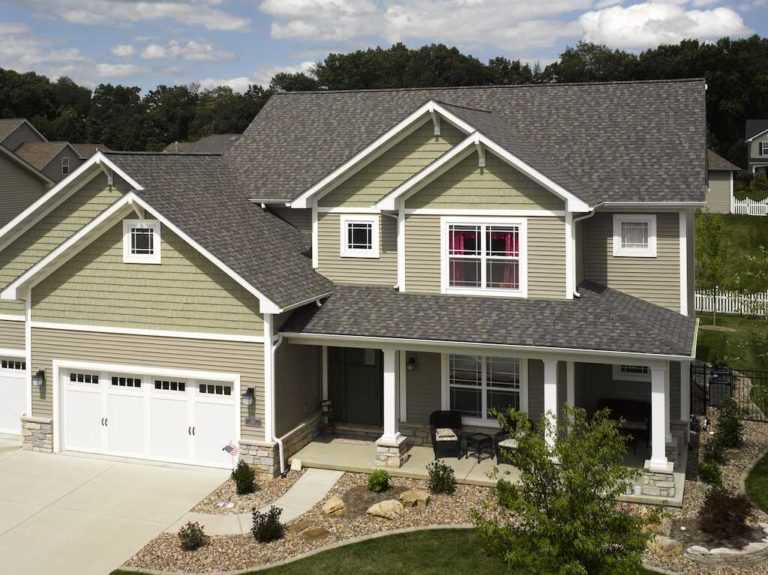The attic ventilation plays a vital role in air circulation through your attic. When there is poor ventilation, it can result in higher energy costs and potential roof problems, which can be costly to address.
When it comes to implementing ventilation, there are two effective solutions. These include air ridge vents and turbines. Each of these types of vents provides various benefits while having some setbacks. With a better understanding of each type of ventilation, you will be able to determine which will work best for your home.
Key Differences Between Air Ridge Vents and Turbines
Both of these types of roof vents provide adequate ventilation by moving the hot air out of your attic, lowering the humidity level, and improving the airflow of the space. However, there are some notable differences between these two
Turbine vents are dome-shaped vents that sticks out of the roof. The vent is equipped with multiple blades that spin. The blades are powered by the wind and work to draw hot air from the attic.
Alternatively, ridge vents are a style of vent that is stretched along the roof’s entire ridge line. These vents are less visible than turbines due to their matching caps. They allow the passive airflow of hot and moist air by allowing it to move up and out of the attic and through your roof.
What Are Air Ridge Vents?
As you may have guessed by the name, air ridge vents are a type of attic ventilation that runs along the ridge of the roof of your home. Placing the vents at the top peak of your roof allows you to match it with the shingles and create a subtle, sleek appearance.
These vents are an excellent choice for most square footage. Given the fact that hot air rises, the peak is the optimal location for the air to rise out and exit your roof. With adequate installation and the right intake air vents, such as soffit vents, air ridge vents provide exceptional passive airflow that is superior to other types of vents.
Pros
Some of the pros of air ridge vents for your attic ventilation include:
- They are nearly invisible as they blend with the ridge of your roof
- They are excellent for cooler climates
- They are able to keep pests away from your attic
- They are effective for passive venting with the proper intake vents
- They can cover the full length of your home’s roof to ensure maximum airflow
Cons
There are also some cons with air ridge vents for attic ventilation. These include:
- They must be installed completely accurately, or the airflow will be compromised
- Incorrect installation can result in pests or snow and rain damage
- They are not a good option for short rooflines or complicated rooflines
- They may not provide adequate airflow on tall, large, or steep roofs
- They tend to be more expensive to install
What Are Turbines?
Turbines are a type of attic ventilation that is essentially a wind turbine that protrudes out the top of the roof. This type of vent is visible and does not blend as well as air ridge vents. However, they are not considered an eyesore to most people.
Turbines do not use any electric power to function. However, they do not provide passive ventilation. Instead, they use wind energy to move the warm air from inside your attic and out of your home. As the wind blows, the turbine is pushed in a circular motion. The blades inside the vent capture the warm air and push it out. In most cases, you will need to install at least two or three turbines to provide adequate ventilation.
Pros
Several pros exist when it comes to the use of turbines. These include:
- They are less expensive to install than ridge vents
- They provide visual interest to an otherwise dull roof appearance
- They work well in hot and humid climates
- They work well for large attic spaces
- They can function at any location on the roof and do not rely on the ridge line
- They are easier to add to existing roofs without a lot of work
Cons
Some cons also exist with the use of turbines for attic ventilation. These include:
- Unlike air ridge vents, they are visible
- Homes will require at least two turbines for adequate results
- They require regular lubrication and maintenance
- They need at least 5 MPH wind speeds to work well
- They can allow leaks, rain, and pests inside
Air Ridge Vents vs Turbines
When trying to determine which type of attic ventilation will work best for you, it is important to consider a variety of factors.
Deterring Pests
When it comes to preventing pests from entering your roof, turbines will not be the best option. These vents are openings that can allow water, rodents, and other pests inside your home and attic. This can result in damage. To prevent pests from causing problems, you may want to opt for an air ridge vent.
Costs
When it comes to implementing a cost-effective attic ventilation system, turbines are by far the better option. These vents are far less expensive than air ridge vents. Additionally, they can be installed on roofs that are already installed, eliminating the need for an entirely new roof to be able to take advantage of the ventilation services.
Appearance
In terms of appearance, both types of vents are favorable. It is important to consider your specific aesthetic goals and the look you want to achieve. Air ridge vents are typically invisible and blend with the rest of the roof materials. On the other hand, turbines are far more visible but not really unattractive.
Installation
In terms of installation, turbines are preferable due to the fact that they can be installed at any location on the roof. They are also able to be installed on an existing roof. Turbines typically only require adding a single hole through the roof and down into the attic.
Eco-Friendliness
Turbines tend to be the more eco-friendly option for attic ventilation. These vents run on wind power and can effectively improve the airflow in your home while reducing your energy costs. Due to the fact that they provide active ventilation, they have the ability to remove more air than ridge vents, which can keep your home much cooler.
Contact Our Roofing Professionals in Delafield, WI
If you are experiencing air circulation issues and want to improve your attic ventilation, you should contact Resistance Exteriors right away. Our roofing experts in Delafield, WI, will be able to inspect your roof and attic space and determine which type of ventilation will work best to keep the temperature in your home. Contact our team today at 262-951-0875 to get started with an estimate.


